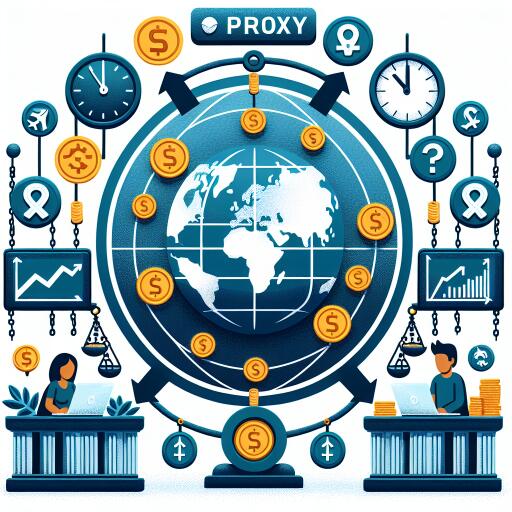Understanding the Proxy Market
In the digital world, proxies play a key role, much like the subtle yet significant impact of the “invisible hand” in economics. Proxies are woven into the fabric of our internet experience, albeit often unnoticed. Despite their widespread use, there’s a lingering skepticism due to the perception of proxies as tools of questionable intent. Nevertheless, they have become indispensable in numerous business operations.
A proxy, in simple terms, is an internet-connected device that reroutes traffic for another machine. They share some technological foundations with the more familiar virtual private networks (VPNs). The key difference is that while VPNs offer user-friendly interfaces and extra features such as cybersecurity services, proxies are more streamlined and modular, often only consisting of IP addresses and ports.
This minimalist nature allows proxies to be adaptable, serving various business functions. For example, they provide critical location-based data which can be essential for specific applications. Consequently, while the average consumer might not interact with proxies directly, businesses depend significantly on them. This disconnect contributes to the air of skepticism surrounding proxies since efficient operations mean users are often unaware of their presence.
However, proxies attract attention when issues arise, and unfortunately, this attention is typically negative, framing proxies in a suspicious light. Moreover, there is an element of mystery in how proxies are acquired, particularly because every proxy must be sourced from a device someone owns, necessitating specific software installations.
The process of acquiring proxies can vary according to their types. The two most common categories are datacenter and residential proxies. Datacenter proxies, acquired from business-owned server farms, are generally straightforward and uncontroversial. In contrast, residential proxies come from consumer devices like personal computers and smartphones, with methods of acquisition differing across providers.
A crucial point is that proxies solely serve as intermediaries for traffic. Buyers do not gain control over the devices themselves, receiving only necessary data such as device type and location. Once a pool of IP addresses is compiled, proxy providers usually conduct a cost analysis to establish the pricing, selling proxies based on IP or bandwidth usage.
Proxies are pivotal for businesses. Purchasing proxies grants them access to a specified number of IP addresses or the complete pool if bandwidth is metered. Importantly, proxies are provided as a service, not as a standalone product. The provider retains ownership and management responsibilities, setting restrictions to prevent misuse.
Proxies serve as tools to achieve specific objectives. While they can be beneficial for consumer-focused purposes, there’s potential for misuse. Consequently, providers often employ controls to mitigate potential abuses. Some core applications of proxies include travel fare aggregation and brand protection services.
Travel Fare Aggregation
Travel fare aggregation is one of the well-known applications of proxies. When planning travel, most of us use price comparison services that rely heavily on proxies. Travel fare data is often location-specific, so aggregators must gather accurate data across all possible locations to offer competitive deals. Proxies help bypass the costly logistical challenge by allowing data collection that mirrors the user’s location.
With proxies, the complex process is simplified. Proxies are employed to gather accurate data through automation, repeated as needed, and the compiled data is then analyzed and presented to consumers. Without proxies, such a business model might be unfeasible, yet their use remains hidden from the end user.
Brand Protection Services
Counterfeit goods have infiltrated online and peer-to-peer marketplaces, making it difficult for businesses to monitor and tackle such practices. Proxies enable automated data collection and monitoring, allowing businesses to identify potential counterfeit sellers across various platforms, even those with geographic restrictions. They provide a means to bypass inadvertent bans that result from automation.
Although proxies are intricate components of many business strategies, users seldom interact with them, contributing to their misunderstood nature. Despite being perceived with suspicion, proxies underpin business models that ultimately benefit consumers significantly.
This exploration is just a glimpse into how proxies are integrated into today’s digital ecosystems, enhancing efficiency and fostering innovation. Their strategic importance makes them a cornerstone of modern technological applications, quietly yet effectively supporting business growth and protection.








